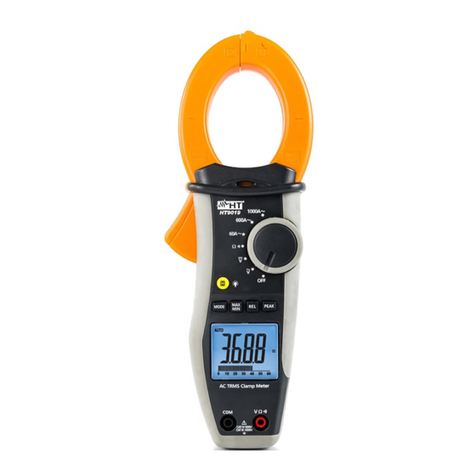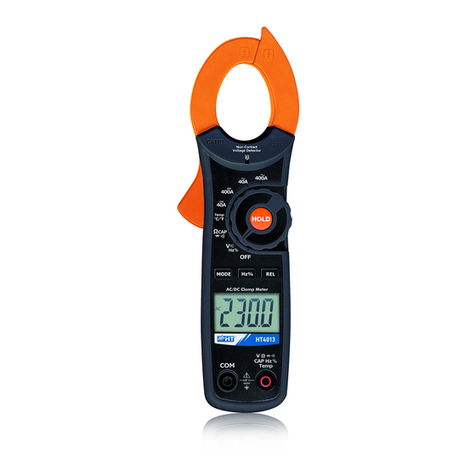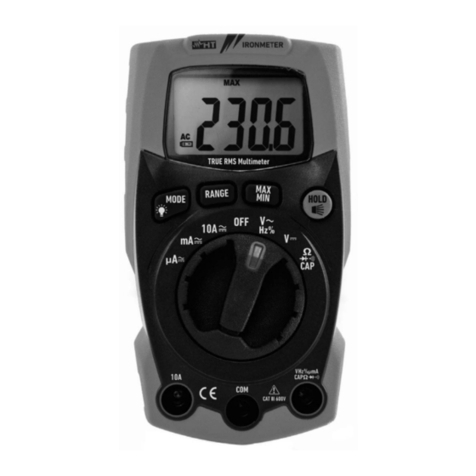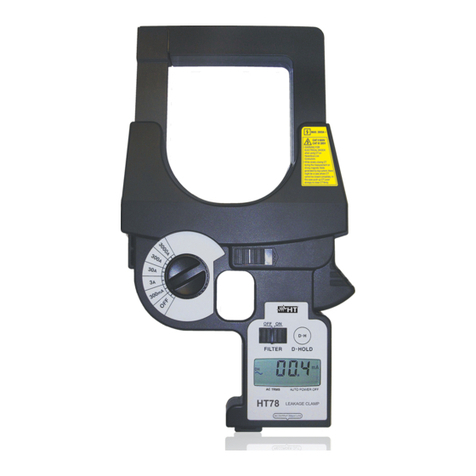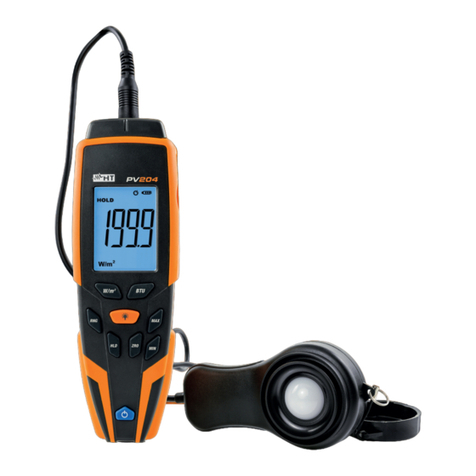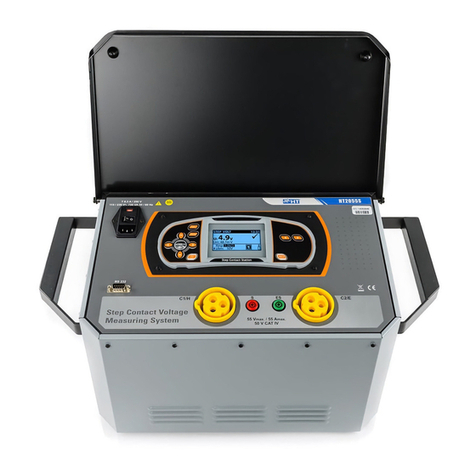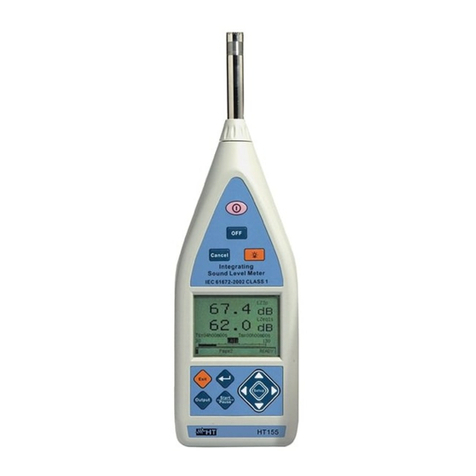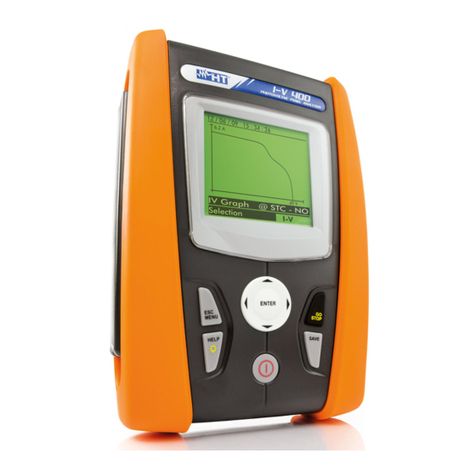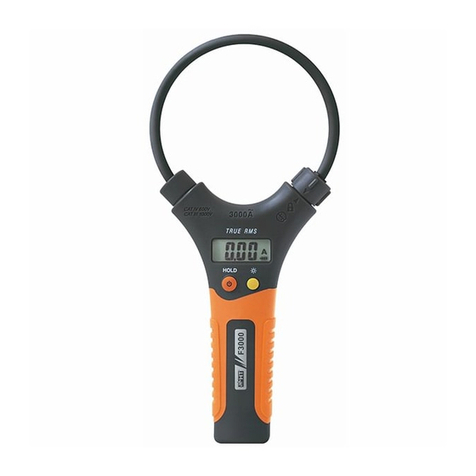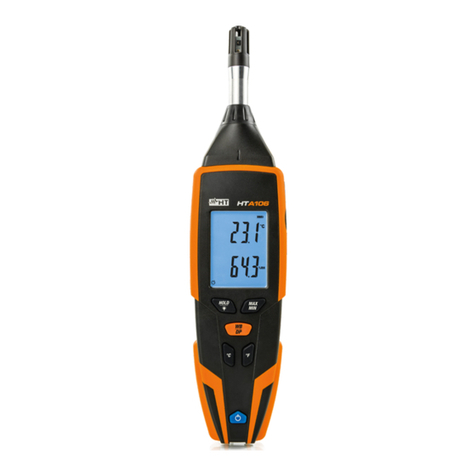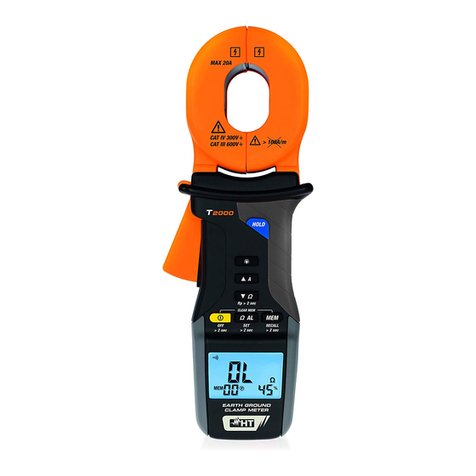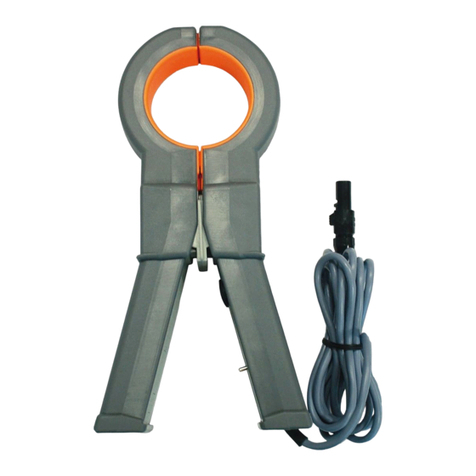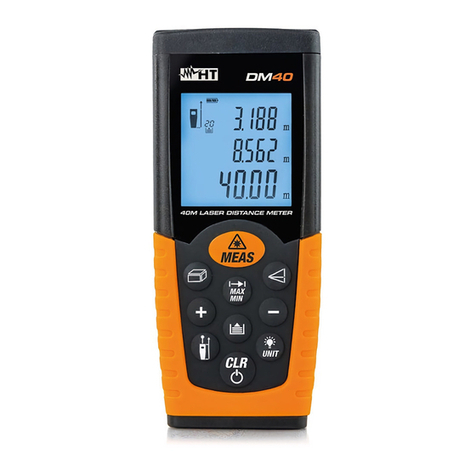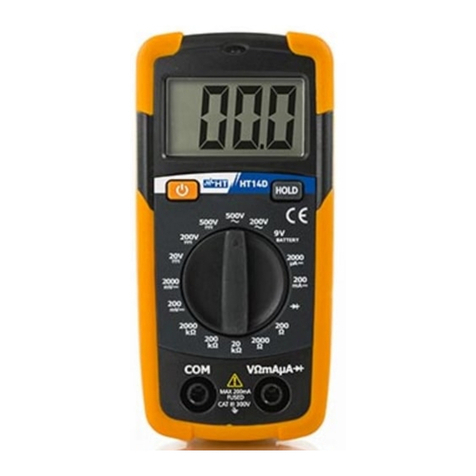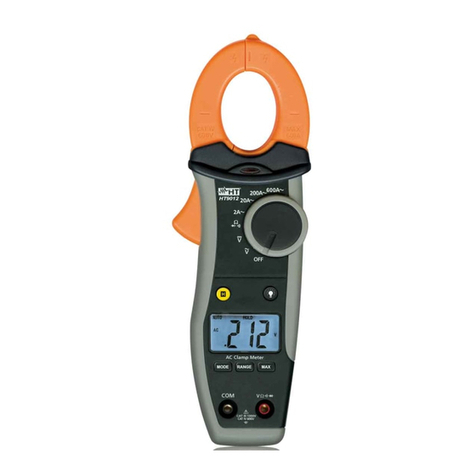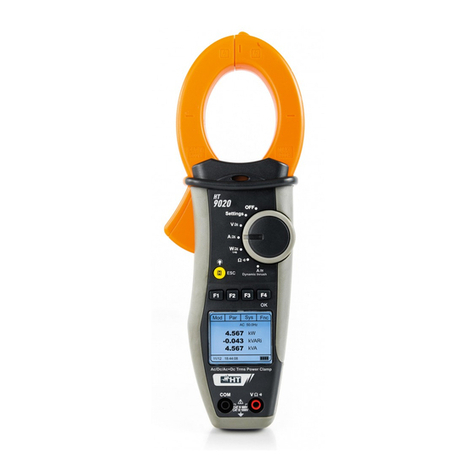
HT701
EN - 1
Table of contents:
1.PRECAUTIONS AND SAFETY MEASURES...............................................................2
1.1.Preliminary instructions..................................................................................................... 2
1.2.During use......................................................................................................................... 3
1.3.After use............................................................................................................................ 3
1.4.Definition of measurement (overvoltage) category............................................................ 3
2.GENERAL DESCRIPTION...........................................................................................4
2.1.Measuring average values and TRMS values................................................................... 4
2.2.Definition of true root mean square value and crest factor................................................ 4
3.PREPARATION FOR USE...........................................................................................5
3.1.Initial checks...................................................................................................................... 5
3.2.Instrument power supply................................................................................................... 5
3.3.Calibration......................................................................................................................... 5
3.4.Storage.............................................................................................................................. 5
4.OPERATING INSTRUCTIONS.....................................................................................6
4.1.Instrument description....................................................................................................... 6
4.2.Description of function keys .............................................................................................. 7
4.2.1.HOLD/LOCK key ........................................................................................................................ 7
4.2.2.MAX/MIN/key.......................................................................................................................... 7
4.2.3.Hz/0/key........................................................................................................................... 7
4.2.4.MODE key .................................................................................................................................. 7
4.2.5.STORE/RECALL key.................................................................................................................. 8
4.2.6.RANGE/50V-1kV key ................................................................................................................. 8
4.2.7.TEST key.................................................................................................................................... 8
4.3.Internal modes of the instrument....................................................................................... 9
4.3.1.Deactivation of the Autobacklight function ................................................................................. 9
4.3.2.Deactivation of the Auto power off function................................................................................ 9
4.3.3.AutoTest and Manual Test mode ............................................................................................... 9
4.3.4.HFR mode .................................................................................................................................. 9
4.3.5.SMOOTH mode.......................................................................................................................... 9
4.3.6.Integrity test on internal fuse ...................................................................................................... 9
4.4.Measuring operations...................................................................................................... 10
4.4.1.DC Voltage measurement........................................................................................................ 10
4.4.2.AC Voltage and Frequency measurement............................................................................... 11
4.4.3.DC Current measurement ........................................................................................................ 12
4.4.4.AC current and frequency measurement ................................................................................. 13
4.4.5.Resistance measurement and continuity test........................................................................... 14
4.4.6.Diode test.................................................................................................................................. 15
4.4.7.Capacitance measurement....................................................................................................... 16
4.4.8.Temperature measurement...................................................................................................... 17
4.4.9.Insulation resistance measurement.......................................................................................... 18
5.MAINTENANCE .........................................................................................................19
5.1.Replacing the batteries and the internal fuse.................................................................. 19
5.2.Cleaning the instrument .................................................................................................. 19
5.3.End of life ........................................................................................................................ 19
6.TECHNICAL SPECIFICATIONS ................................................................................20
6.1.Technical characteristics................................................................................................. 20
6.1.1.Electrical characteristics........................................................................................................... 23
6.1.2.Considered standards .............................................................................................................. 23
6.1.3.General characteristics............................................................................................................. 23
6.2.Environment.................................................................................................................... 23
6.2.1.Environmental conditions for use ............................................................................................. 23
6.3.Accessories..................................................................................................................... 24
6.3.1.Standard accessories............................................................................................................... 24
6.3.2.Optional accessories................................................................................................................ 24
7.SERVICE....................................................................................................................25
7.1.Warranty conditions......................................................................................................... 25
7.2.Service ............................................................................................................................ 25













